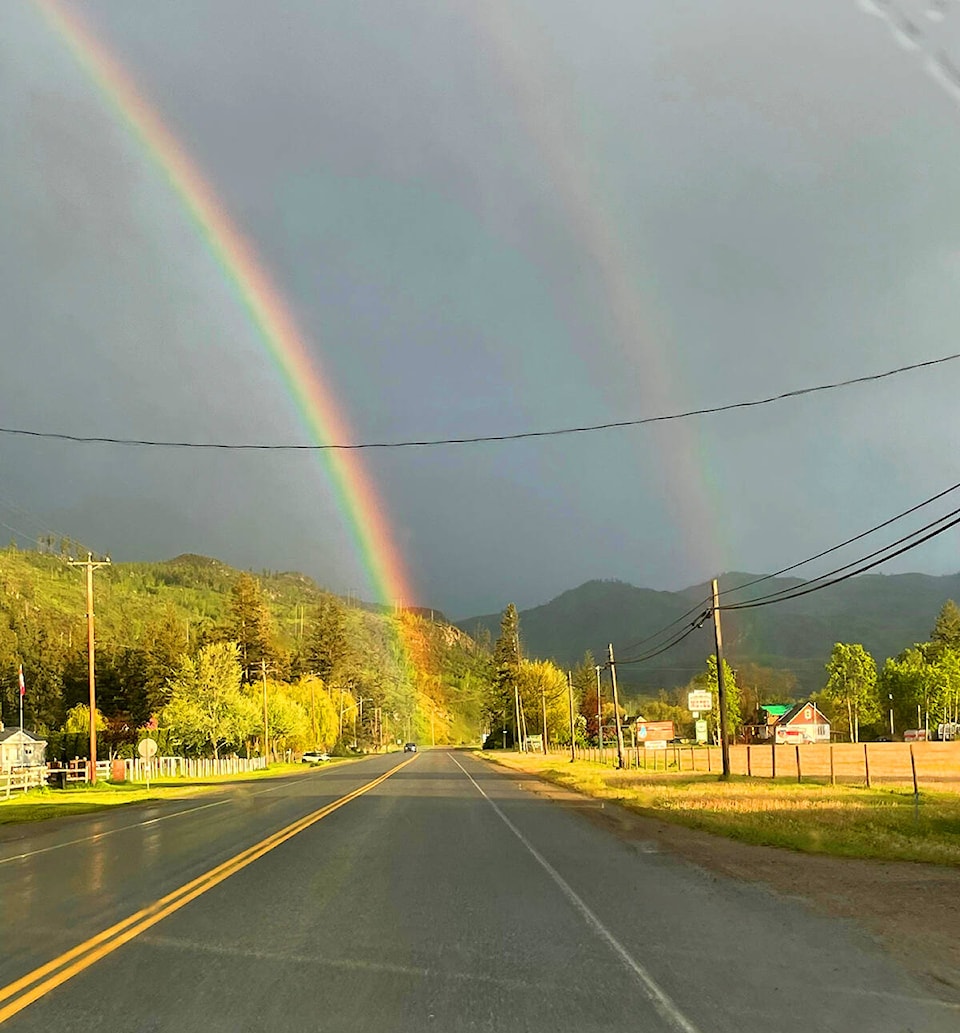Seeing a primary rainbow with another in close proximity is often called “twinned.”
A secondary rainbow, at a greater angle than the primary rainbow, is often visible. The term double rainbow is used when both the primary and secondary rainbows are visible. In theory, all rainbows are double rainbows, but since the secondary bow is always fainter than the primary, it may be too weak to spot in practice.
Secondary rainbows are caused by a double reflection of sunlight inside the water droplets. Technically the secondary bow is centred on the sun itself, but since its angular size is more than 90° (about 127° for violet to 130° for red), it is seen on the same side of the sky as the primary rainbow, about 10° outside it at an apparent angle of 50–53°. As a result of the “inside” of the secondary bow being “up” to the observer, the colours appear reversed compared to those of the primary bow.
Source: Wikipedia
_______________
Like us on Facebook
